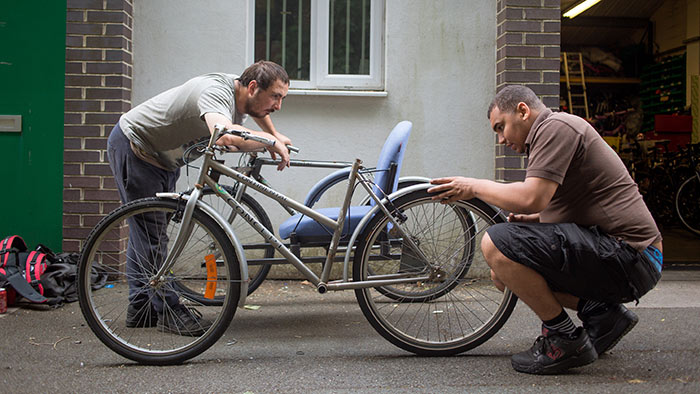"Widening the gaps"
In 2010, the Conservatives gained power in coalition after 13 years out of office. Austerity and welfare reform became lead policies for George Osborne’s Treasury as it sought to reduce government spending.
Professor Beatty and Professor Fothergill had studied labour markets, unemployment, hidden unemployment and incapacity since the early 90s, based at Sheffield Hallam’s Centre for Regional Economic and Social Research (CRESR).
Their knowledge of post-industrial Britain put them in a unique position to understand the impact of the new government’s policies.
To do so, the researchers tapped into a vast range of official statistics. They drove the Treasury's figures down a local level to provide district-by-district analyses.
Their method showed cumulatively and visually how various cuts to unemployment, housing and disability benefits would impact on households of different types in different areas.
This was important because most welfare policy takes little or no account of place. It applies consistently across the UK, regardless of the wide economic and social disparities between, say, St Albans and Barnsley. It was ex-industrial communities with high unemployment that would be hit hardest.
But other areas stood to lose out too. Seaside towns, for example, have high levels of private rented accommodation, low wages and a seasonal economy. Blackpool — a seaside town in a post-industrial region — was to be the worst affected area in the country.
London boroughs such as Tower Hamlets, Haringey or Hackney were also at risk. There, spiralling rents and living costs meant budgets were already tight, so the cuts to housing benefit, and the new benefit cap, hit particularly hard.
In short, policy changes that were being widely referred to as nationwide were anything but. Instead, these reforms worsened the situation for specific communities that had already suffered the most, while scarcely affecting more prosperous regions at all.
As one of the team’s early reports said:
“The financial impact of the reforms varies greatly across the country. At the extremes, the worst-hit local authority areas lose around four times as much, per adult of working age, as the authorities least affected by the reforms.
“A key effect of the welfare reforms will be to widen the gaps in prosperity between the best and worst local economies across Britain”










